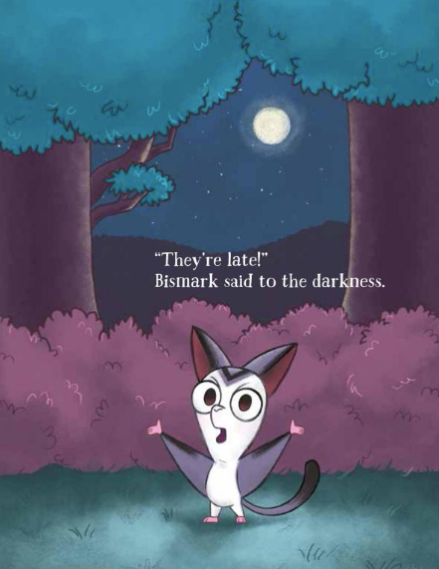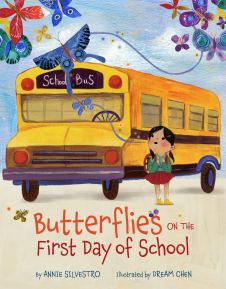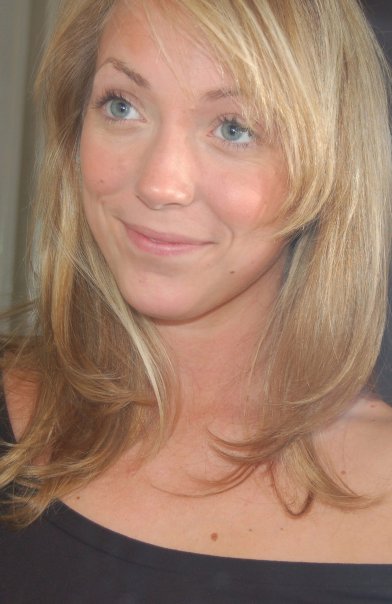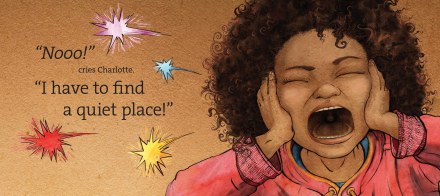
About the Holiday
The warmer weather begs to be enjoyed—whether you’re playing, working, or just lounging around. Established in 1998 as Great Outdoors Week, the holiday expanded to a month-long celebration in 2004. There’s so much to see and do outside as the wonders of nature are always changing and challenging you in new and surprising ways.
The Nocturnals Series
The Nocturnals series of books—early readers and middle grade novels—brings together a trio of friends for adventures and learning. The three main characters are Dawn, a gentle, kind, and wise red fox; Tobin, a shy, hesitant, and loyal pangolin; and Bismark, a chatty, romantic, impetuous sugar glider. Their distinct personalities serve them well as they meet up with various other woodland animals in mysterious, dangerous, and surprising ways. No matter what challenges they face, however, Dawn, Bismark, and Tobin support each other as best friends should.
Whether children meet the Nocturnal Brigade as an beginning reader or as an established reader, they will love following the friends’ adventures and be charmed by their close relationship, even when squabbles arise. As with any favorite series, kids will look forward to catching up with what this unique group of nighttime animals are doing next.
Grow & Read Early Reader Level 2 Books

The Moonlight Meeting
Written by Tracey Hecht and Rumur Dowling | Illustrated by Waymond Singleton
As the twinkling stars began to appear in the sky, a sweet pangolin by the name of Tobin woke up. “‘Oh my, Tobin said. ‘I smell something delicious!’” He yawned and stretched and went in search of that wonderful smell. It didn’t take long before he bumped into a pomelo—the perfect thing for breakfast. But before he could dig in, he heard a screech from the tree above. “‘Thief!’ it cried.” Tobin was so frightened that he “let out a stinky poof!”

Image copyright Waymond Singleton, 2017, text copyright Tracey Hecht, 2017. Courtesy of Fabled Films Press.
The small creature in the tree covered his nose. “‘That stench! That odor! That tang!’” he exclaimed. “‘This calls for the flaps!’” In a moment the animal leaped out of the tree and glided to the ground. Although a little scared, Tobin was curious. He wondered if perhaps this creature could become a friend. But it didn’t seem he was interested in anything but the pomelo. As he grabbed the green fruit, he introduced himself. “‘I am Bismark! Sugar glider spec-tac-u-lar! And the owner of this pomelo.’” But before Tobin could reply, a red fox emerged from the bushes.
She had smelled Tobin’s spray of fear and wondered if help was needed. The fox had “kind eyes” and “a warm smile.” Bismark spoke up and told the fox about Tobin and the pomelo and the thievery. The fox asked if all of this was true. “Tobin was shy, but the fox made him feel brave.” He answered that he was not stealing the fruit, but Bismark said he had seen it first.

Image copyright Waymond Singleton, 2017, text copyright Tracey Hecht, 2017. Courtesy of Fabled Films Press.
The fox thought over the problem and…sliced the pomelo into three pieces. She gave a piece to Tobin and Bismark and kept one for herself. “‘Mmm,’ Tobin said. The pomelo was sweet! ‘Burp,’ Bismark belched. The pomelo was juicy. ‘Perfect,’ the fox declared. The pomelo was delicious!” It seemed the little sugar glider liked more than just the pomelo. After smoothing his hair and giving a deep bow, he introduced Tobin and himself. The fox smiled and told them her name was Dawn. Tobin was smitten.
Suddenly, they all realized that each of them slept during the day and were awake at night. Bismark exclaimed that they would be “a moonlight trio… a nocturnal brigade”… a…. Dawn broke in. “‘We will be friends,’” she said. Tobin and Bismark were happy. They were friends.
Facts about the nocturnal animals in the book and their favorite food, the pomelo, follows the story.

Image copyright Waymond Singleton, 2017, text copyright Tracey Hecht, 2017. Courtesy of Fabled Films Press.
Tracey Hecht introduces her unique band of friends in this story that brings a diverse group of animals together over the disputed ownership of a pomelo. The strong personalities of the characters lend humor and intrigue to their quarrel over this favorite fruit, and as Dawn raises her sharp claws to decide the issue, readers may join Tobin and Bismark in a moment of wide-eyed suspense. The fox’s solution, however, is one of inclusion and sharing and sets the tone for the rest of the series. Hecht’s short sentences are composed of active, high-interest vocabulary, and the story moves along at a quick pace, carried by realistic and funny dialogue.

Kids will love meeting Dawn, Bismark, and Tobin through the illustrations on each page that convey their personalities and the storyline clearly. Tiny Bismark, with his big eyes, dramatic expressions, and energetic attitude is always ready for action. Tobin, the scaly pangolin with long claws, an anxious demeanor, and an inherent sweetness, is devoted and trustworthy. And Dawn, with her sleek red coat and gentle eyes, is caring, intelligent, and the glue that holds the three together. As readers get to know each character better, they’ll look forward to each one’s individual reactions to whatever adventure they encounter.
Ages 5 – 7
Fabled Films Press, 2017 | ISBN 978-1944020149
You can find The Moonlight Meeting at these booksellers
Amazon | Barnes & Noble | Books-a-Million | IndieBound

The Slithery Shakedown
Written by Tracey Hecht | Illustrated by Josie Yee
Although nighttime had come, Bismark was still waiting for his friends to arrive. “Bismark tapped his foot. Bismark put his fists to his hips. Bismark scrunched his tiny pink nose. This sugar glider was peeved!” Still, he was more relieved than angry when Tobin, the pangolin, came through the reeds. It wasn’t long before Dawn, a red fox, joined them. Bismark jumped on top of a rock and declared that he was going to take them on an adventure. After all he was “‘Bismark the Brave.’” Tobin and Dawn giggled at their tiny friend.

Image copyright Josie Yee, 2018, text copyright Tracey Hecht, 2018. Courtesy of Fabled Films Press.
Before they could get started, though, Dawn noticed something lurking in the bushes. It was a snake—a snake who seemed to have designs on eating Bismark for breakfast. “The snake slithered closer. ‘Sss-scrumptious!’ the snake said. ‘A sss-scrawny, little sss-sugar glider.’” Bismark ran and hit behind Dawn’s legs. Dawn stepped forward and confronted the snake. “Tobin summoned his courage” and joined her.
The snake prepared to attack. “Dawn snarled…. Tobin raised a sharp, taloned claw.” The snake took a look at the stalwart friends and decided it was time to “‘sss-skedaddle.’” Biskmark was trembling as he watched the snake slither away, but he would not admit that he had been scared. Dawn and Tobin reassured him that “‘You can be scared and brave, too.’” In fact, they told him, they had also been afraid of the snake.

Image copyright Josie Yee, 2018, text copyright Tracey Hecht, 2018. Courtesy of Fabled Films Press.
Just then something blue and shiny in the bushes caught Bismark’s eye. He went closer. The thing was long and thin, but it did not slither. “‘By the moon!’ Bismark said. ‘Look here! That snake slithered right out of its skin.’” He picked it up and tore it into three pieces. He gave a piece to Tobin and Dawn. They each tied the piece of snakeskin around their neck like a cape and admired themselves. Dawn thought it was the perfect symbol for their brigade. “‘The Nocturnal Brigade!’ Tobin cheered, and Bismark added, “‘Bold in adventure. And best of all, brave!’”
Information about the nocturnal animals in the book and their favorite food, the pomelo, follows the story.
When the three are threatened by a snake, will they be brave enough to send him packing? Even though Bismark considers himself the bravest of the brave, he turns out to be the one most frightened by the slithery bully. With his new friends behind him, Biskmark learns that fear and bravery often go hand in hand. Here, the three solidify their friendship with a physical symbol of the brigade, and their blue snakeskin capes become a regular feature of the series. Using lots of alliteration, dialogue and some sss-snakey onomatopoeia, Tracey Hecht weaves a fast-moving story that shows that sticking together and standing up for others is the best way to defeat a bully.
Josie Yee further develops her characters in this story that sees the usually uber-confident Bismark experience fear that he can’t hide. Tobin demonstrates another level of self-assurance by swallowing his usual shyness to confront the snake, and Dawn, true to her nature, serves as strong example to her friends and readers.
Ages 5 – 7
Fabled Films Press, 2018 | ISBN 978-1944020170
You can find The Slithery Shakedown at these booksellers
Amazon | Barnes & Noble | Books-a-Million | IndieBound

The Peculiar Possum
Written by Tracey Hecht | Illustrated by Josie Yee
It was a bright, beautiful night when Dawn, a fox; Bismark, a sugar glider, and Tobin, a pangolin met under the pomelo tree. Bismark was dismayed because while the tree was usually full of fruit, tonight he could only find one. Just then they heard a strange “cluck cluck clatter! Chit chit chatter!” Bismark was sure it was a prowler who’d come for his pomelos. “Suddenly, the wind blew. The shadows shifted. A strange smell filled the air.”
Dawn looked up into the tree and saw “two shiny, brown eyes. And a paw, holding a pomelo! ‘Popping peepers!’ Bismark bellowed. ‘There is a prowler! And it has one of my precious pomelos!’” Quickly, the eyes disappeared and the pomelo came soaring out of the swaying branches. With a few more clucks and clatter, chits and chatter, the prowler plunked down in front of them. The three friends recognized the interloper as a possum. They gathered around it, but it lay motionless on the ground.

Image copyright Josie Yee, 2018, text copyright Tracey Hecht, 2018. Courtesy of Fabled Films Press.
Dawn prodded it with her paw. “‘Perhaps this possum is feeling a bit peaky,’” she said. But the possum opened one eye and told them it was just playing possum. The possum got up and introduced herself as Penny. “‘Pleased to meet you,’” she said, sticking out her paw. But Bismark was not pleased to meet her. He did not like that she “prowls and pillages.” As evidence he pointed to the wayward pomelo.
Dawn gazed at her friend and said, “‘Bismark, these pomelos belong to everyone.’” Well, what about the way Penny chits and chatters? Bismark asked. He thought her way of speaking was strange. Dawn reminded him that he too had a unique way of speaking. Then Bismark pointed out the unusual hairless patch on Penny’s tail. “Dawn smiled gently. She looked down at Bismark’s bald spot. ‘Bismark, Penny is not the only one with a hairless patch.’” Still, Bismark wasn’t keen on Penny’s smell or the way she played possum.

Image copyright Josie Yee, 2018, text copyright Tracey Hecht, 2018. Courtesy of Fabled Films Press.
Tobin hurried to Penny’s side to defend her. “‘Penny, I spray a terrible odor when I get scared,’” he reassured her, reaching for her paws. Dawn told Bismark that no one is exactly like someone else. That everyone is unique. Then Penny told Bismark that she was proud of who she is. Bismark looked at Penny, and even though it was hard to admit he’d been wrong, he apologized to her and proclaimed, “‘You are your own possum. And that makes you perfect.’” Then Bismark split the pomelo into four sections and they all had a pomelo picnic.
Fun facts about pangolins, red foxes, sugar gliders, brushtail possums, and pomelos follow the text. Back matter also includes a Language Glossary showing forms of five words in the story as well as the translations of these words into Spanish, Portuguese, Mandarin, French, and Arabic.

Image copyright Josie Yee, 2018, text copyright Tracey Hecht, 2018. Courtesy of Fabled Films Press.
When Bismark encounters Penny, a possum and an animal he’s never seen before, his adverse reaction to her disappoints Dawn and Tobin, who show him the errors in his thinking. Through her story, Tracey Hecht demonstrates that everyone has more similarities than differences and that what makes one person distinctive should be celebrated. Along the way, readers learn how to welcome a new friend.
Ages 5 – 7
Fabled Films Press, 2018 | ISBN 978-1944020194
You can find The Peculiar Possum at these booksellers
Amazon | Barnes & Noble | Books-a-Million | IndieBound
Grow & Read Early Reader Level 3 Book

The Chestnut Challenge
Written by Tracey Hecht | Illustrated by Josie Yee
After sundown, while other animals slept, Dawn, a red fox; Bismark, a sugar glider; and Tobin, a pangolin “were playing a game of chestnut checkers.” Bismark thought Tobin was taking too long to move his chestnut. He snapped his fingers, tapped his foot, and finally said, “‘Hurry up!’” But Dawn chided Bismark and said Tobin should take the time he needed. At last Tobin moved his piece. Bismark was delighted. Tobin, it seemed, had set him up to win. Bismark moved one of his chestnuts. Now it was Tobin’s turn to be delighted. “Tobin jumped a chestnut across the board—and captured all of Bismark’s chestnuts.” Bismark was crushed. Tobin chuckled and said that it was only a game.

Image copyright Josie Yee, 2019, text copyright Tracey Hecht, 2019. Courtesy of Fabled Films Press.
Suddenly, a voice called out and Chandler, a chinchilla, popped out from a nearby bush. He said that he was “‘the real chestnut champion.’” Bismark warned his friends against playing chestnuts with Chandler. He seemed to boastful to the little sugar glider, but Dawn wanted to give him a chance. Chandler chose Tobin to play first. Tobin didn’t like playing competitively; he just liked to have fun.
Bismark was all for Tobin taking up Chandler’s challenge, while Dawn said it was up to him to play or not. Chandler wanted an answer. Tobin decided to play—but just for fun. “Chandler and Tobin started to play. Chandler’s brow wrinkled. Tobin’s jaw tightened. No one seemed to be having fun.” Just then, Chandler shouted and pointed to the bushes. Tobin, Bismark, and Dawn all turned to look. “That’s when Chandler reached forward—and moved one of Tobin’s chestnuts!” When the three friends turned back, Chandler took his turn and Tobin’s chestnut that he had moved.

Image copyright Josie Yee, 2019, text copyright Tracey Hecht, 2019. Courtesy of Fabled Films Press.
Dawn thought something looked suspicious. Bismark begged Tobin to win against the “cheeky challenger.” Tobin was nervous. Suddenly, Chandler sneezed right in their faces. While their eyes were closed, he moved two chestnuts. He laughed when he saw that no one had seen him. Chandler only grew bolder. When Tobin closed his eyes for a moment, the chinchilla stole one of his pieces. This time Bismark caught him. He called on Dawn and Tobin, but Chandler denied it. Dawn, however, had also seen him steal the piece. She looked directly into his eyes and asked if he had stolen Tobin’s chestnut.
Now it was Chandler’s turn to be nervous. His cheeks reddened, his teeth chattered, “and then from Chandler’s paw, out dropped the chestnut.” With tears in his eyes, he admitted that he was a cheater. Dawn told him that champions don’t use tricks, and Tobin told him no one wins all the time and practice helps. Then they offered Chandler a second chance. So with Tobin cheering him along and Bismark keeping an eye on the board, “the four friends settled into a cheerful game of chestnut checkers.”
Fun facts about pangolins, red foxes, sugar gliders, chinchillas, and chestnuts follow the story.

Image copyright Josie Yee, 2019, text copyright Tracey Hecht, 2019. Courtesy of Fabled Films Press.
As the three friends meet a chinchilla with competitive streak, Tracey Hecht shows readers that cheating to win deprives all participants—even the champion—of the fun and pleasure of playing a game. In today’s super-charged world of competition at all levels, Hecht’s reminder that good sportsmanship wins out is welcome, and Tobin, Bismark, and Dawn, with their various personalities and generous offer to give him Chandler a second chance, make good companions as developing readers increase their skills while learning to play fair and for fun.
Josie Yee’s nighttime illustrations, rendered in dark blues, plums, and deep greens, take kids to the heart of a heated chestnut checkers match where they watch as Chandler concocts false alarms to cheat his way to victory. When Chandler is caught red-handed, readers see the positive effect his confession and the brigade’s offer of another chance have on him.
Ages 6 – 8
Fabled Films Press, 2019 | ISBN 978-1944020231
You can find The Chestnut Challenge at these booksellers
Amazon | Barnes & Noble | Books-a-Million | IndieBound
You can learn more about The Nocturnals series; watch videos of games, face painting, and other activities; find educational language arts and science guides; download activity kits; and even join the Brigade by visiting The Nocturnals website.
You can find information about the Grow & Read program, Educator’s Guides, and The Nocturnals Book Club Kits with printable coloring pages and masks at Grow & Read.
Picture Book Review


































































